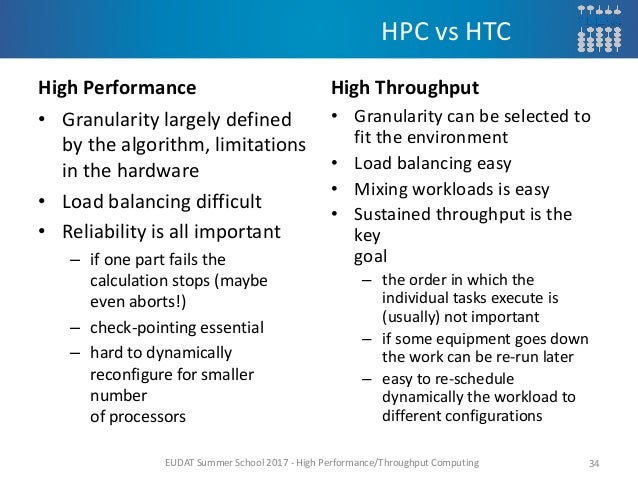- What is HTCondor?
https://research.cs.wisc.edu/htcondor/description.html
- High Throughput Computing (HTC)
As computers became smaller, faster and less expensive, scientists moved away from mainframes and purchased personal computers or workstations. An individual or a small group could afford a computing resource that was available whenever they wanted it. The resource might be slower than the mainframe, but it provided exclusive access. Recently, instead of one large computer for an institution, there are many workstations. Each workstation
To achieve the highest throughput,
http://research.cs.wisc.edu/htcondor/overview/
High Throughput Computing Facilities
High throughput computing( HTC) is an efficient and effective way to solve many research problems – by breaking the problems up into numerous small, independent sub-tasks and distributing work across a grid of many different computers. HTC is a complement to supercomputing and is particularly well suited to applications in which there is much data to be analyzed but little need for communication - such as data mining, molecular docking, etc .
https://www.its.hku.hk/services/research/htc/system
What Is High Throughput Distributed Computing
Parallel & Cluster Computing High Throughput Computing
- In this tutorial, we will learn how to apply DAGMan to help us manage jobs and job interdependencies. First, we will revisit the optimization example from in the previous section. Second, we will manage a set of molecular dynamics (MD) simulations using the NAMD program. NAMD is conventionally used in highly parallel HPC settings, scaling to thousands of cores managed by a single job. One can achieve the same scaling and ease of management in HTC systems using thousands of individual jobs using workflow tools such as DAGMan.
https://swc-osg-workshop.github.io/OSG-UserTraining-Internet2-2018/novice/DHTC/04-dagman.html
- DAGMan (Directed Acyclic Graph Manager) is a meta-scheduler for HTCondor. It manages dependencies between jobs at a higher level than the HTCondor Scheduler.
https://research.cs.wisc.edu/htcondor/dagman/dagman.html





